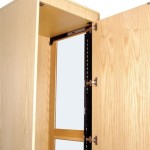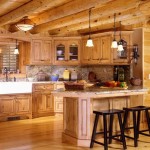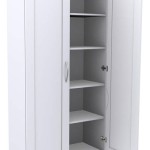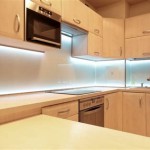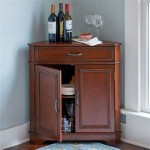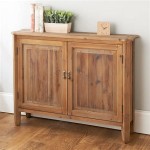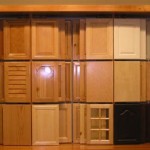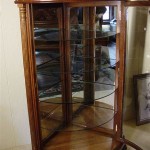How To Install Cabinet Drawer Glides: A Comprehensive Guide
Installing cabinet drawer glides is a common home improvement task that can significantly enhance the functionality and usability of cabinets. Whether replacing old, worn-out glides or installing new drawers in custom cabinetry, understanding the process ensures a smooth and professional outcome. This article provides a detailed, step-by-step guide to installing cabinet drawer glides, covering the necessary tools, materials, and techniques for a successful installation.
Key Point 1: Preparation and Planning
Before initiating the installation process, thorough preparation and planning are crucial. This phase involves gathering the necessary tools and materials, accurately measuring the drawer and cabinet opening, and selecting the appropriate type of drawer glides for the specific application.
The first step is to gather the requisite tools and materials. A basic toolkit should include: a drill with various drill bits, a screwdriver (both Phillips head and flathead), a measuring tape, a pencil, a level, safety glasses, and a dust mask. Additionally, it is beneficial to have a stud finder to locate wall studs when mounting glides directly to the cabinet frame. For precise measurements, a digital caliper can also be useful.
Accurate measurement is paramount for proper glide installation. Measure both the width and depth of the drawer opening within the cabinet. This measurement determines the maximum length of the drawer glide that can be used. Remember to account for any obstructions within the cabinet, such as framing or pipes, that might limit the available space. The drawer itself should also be measured to ensure that the selected glides are compatible with its dimensions. Record all measurements precisely.
Selecting the correct type of drawer glide is essential for optimal performance. Drawer glides are available in various types, including:
Side-mount glides:
These are the most common type and are mounted on the sides of the drawer and cabinet.Center-mount glides:
These are mounted beneath the drawer and require a groove to be cut into the drawer bottom.Undermount glides:
These are also mounted beneath the drawer but offer a concealed appearance and often include soft-close mechanisms.Full-extension glides:
These allow the drawer to be fully extended, providing complete access to the contents.Soft-close glides:
These incorporate a mechanism that gently closes the drawer, preventing slamming.
Prior to beginning any installation, ensure the work area is clean and well-lit. Adequate lighting makes it easier to see the marking and alignment points. Protect the surrounding surfaces with drop cloths or protective coverings to prevent damage from accidental spills or scratches. Review the manufacturer's instructions for the specific drawer glides being installed, as installation procedures may vary.
Key Point 2: Glide Installation Process
With the preparation phase complete, the next step is the actual installation of the drawer glides. This process involves marking the installation points, attaching the glides to the cabinet and drawer, and ensuring proper alignment for smooth operation.
The first step is to mark the installation points on both the cabinet and the drawer. Using a pencil and measuring tape, accurately mark the location where the glides will be mounted. For side-mount glides, ensure that the marks are equidistant from the top and bottom edges of the cabinet opening. Utilize a level to guarantee that the marks are perfectly horizontal. Misalignment can result in binding or uneven drawer movement. The marks should correspond to the screw hole locations on the drawer glides. Precise measurements at this stage are critical to ensure the drawer operates smoothly.
Attaching the drawer glides to the cabinet is the next step. Align the cabinet-side portion of the glides with the marked locations. Pre-drilling pilot holes is highly recommended, especially when working with hardwoods or particleboard. Pilot holes prevent the wood from splitting and make it easier to drive the screws straight. Use screws that are appropriate for the type of material being used, ensuring that they are not too long, which could protrude through the cabinet walls. Securely fasten the glides to the cabinet, ensuring that they are flush against the surface. Repeat this process for the other side of the cabinet.
The subsequent step is to attach the drawer-side portion of the glides to the drawer. Align the drawer-side glides with the marked locations on the drawer box. Again, pre-drilling pilot holes is recommended. Ensure that the glides are positioned squarely and are parallel to the bottom edge of the drawer. Use screws of the correct length to avoid protruding through the drawer box. Securely fasten the glides to the drawer, ensuring they are flush against the drawer sides.
Once the glides are attached to both the cabinet and the drawer, carefully slide the drawer into the cabinet. Ensure that the glides align properly and engage smoothly. If there is resistance or binding, carefully examine the installation for any misalignments or obstructions. Make necessary adjustments to the glide positions until the drawer slides in and out effortlessly.
Key Point 3: Adjustment and Troubleshooting
After installing the drawer glides, it is essential to fine-tune the installation and troubleshoot any issues that may arise. This phase involves adjusting the glide positions, addressing common problems, and ensuring the drawer operates smoothly and correctly.
After the initial installation, the drawer may not slide smoothly or may be misaligned. In such cases, adjustment is necessary. Loosen the screws on either the cabinet-side or drawer-side glides and make minor adjustments to the position. Use a level to ensure the drawer is sitting horizontally. If the drawer is binding, check for any obstructions or uneven surfaces that may be interfering with the glide movement. Minor adjustments can significantly improve the drawer's performance.
Common problems encountered during drawer glide installation include:
Binding:
This often occurs due to misalignment of the glides. Recheck the alignment and make necessary adjustments.Screws Stripping:
This can happen if the pilot holes are too small or if excessive force is used when driving the screws. Use larger pilot holes or apply lubricant to the screws.Drawer Sagging:
This may indicate that the glides are not rated for the weight of the drawer. Replace the glides with ones that have a higher weight capacity.Drawer Not Closing Completely:
This could be due to obstructions within the cabinet or improper glide installation. Ensure that there are no obstructions and that the glides are fully engaged.
After addressing any issues, test the drawer several times to ensure it operates smoothly and correctly. Open and close the drawer fully, checking for any binding, sagging, or uneven movement. If soft-close glides are installed, verify that the soft-close mechanism is functioning properly. Make any final adjustments as needed. Once satisfied with the installation, tighten all screws securely to prevent loosening over time.
Regular maintenance of drawer glides can extend their lifespan and maintain smooth operation. Periodically check the glides for any signs of wear or damage. Clean the glides with a dry cloth to remove dust and debris. Apply lubricant to the glides if they become stiff or noisy. By following these maintenance tips, the drawers will continue to function optimally for years to come.
Installing cabinet drawer glides is a project that requires careful planning, precise measurements, and attention to detail. By following the steps outlined in this guide, individuals can successfully install drawer glides and significantly improve the functionality and usability of their cabinets. Proper preparation, accurate installation, and diligent troubleshooting are the keys to achieving a professional and long-lasting result. Successfully installed drawer glides not only enhance the aesthetic appeal of cabinets but also contribute to a more organized and efficient living space.

How To Install Drawer Slides Step By With Photos Vadania Home Upgrader

How To Install Drawer Slides Build Basic

How To Install Drawer Slides Slide Installation Guide

How To Install Drawer Slides Bottom Mount Tylynn M Rails Drawers

My 9 Best Tips For Installing Cabinet Drawers Remodelando La Casa

How To Install Drawer Slides The Easy Way

Drawer Slides Demystified Wood

How To Install Cabinet Drawers With Ball Bearing Slides Houseful Of Handmade

How To Install Drawers With Side Mount Drawer Slides
How To Install A 3832 Drawer Slide On Frameless Cabinet In Few Steps
Related Posts

